Stephanie Judd is featured on Forbes as one of 15 coaches discussing various ways to reignite your energy and passion if you feel you are losing momentum in a job you’ve had for a long time.
Read MoreWe recently hosted a roundtable discussion on Building Authentic Sales Relationships in a Hybrid Virtual/In-Person Tech Industry. Additionally, we continue to do a great deal of executive coaching for leaders in public health, tech and other fields. There are several unique challenges leaders are facing in supporting their people right now due to the hybrid nature of work and offer these best practices for consideration.
Read MoreStephanie Judd is featured on Forbes as one of 16 coaches discussing the industries most of their clients are in and some of the most common reasons they have opted to engage with a coach.
Read MorePODCAST
In this episode of The Best Kept Secret with Jay Kingly, Stephanie discusses why storytelling is so fundamentally human, and how to leverage storytelling in the sales process.
Read MoreIn the 5+ years that we’ve been operating as Wolf & Heron, we’ve had the privilege of delivering our Influential Storytelling program to 1000s of folks and provided one-on-one story coaching to hundreds of professionals. In our experience, there are several questions that have been posed to us with regularity about storytelling and influence, so we thought we’d take some time to share our perspective publicly.
Read MoreQuestions have a powerful role in conversation and they’re underutilized at work. As experience designers and facilitators, we rely on questions to carry our participants through a process of discovery and learning. As leadership coaches, we rely on questions as the driving force for our conversations. Meanwhile, we see how often questions are underused by leaders, meeting facilitators and organizations in general.
Read MoreCASE STUDY
After a year of piloting a variety of formats for our Influential Storytelling content, we’re excited to establish an enterprise program for Product Managers across Google. The goal is to help Google PMs be better at Product Evangelism, a core skill PM Learning & Development has identified as characteristic of high-performing PMs.
Download our case study to explore more about the work we are doing with Google.
Read MoreCASE STUDY
Five years into our partnership with the Sanger Leadership Center at the Ross School of Business within the University of Michigan, we’re proud of the impact we’ve had, the students we’ve reached, and the way that storytelling has really become a integral part of the Ross community and the university in general.
Check out a summary of the program’s impact so far.
Read MoreWhen we coach leaders as part of an enterprise leadership development program, we often also provide mini training sessions to these same leaders on the basic skills of coaching. What always surprises us is how difficult it is for leaders to see the parallels between coaching and leading, and even understand why learning coaching skills is relevant to their growth as leaders.
In Stephanie’s personal experience, the process of getting certified as a coach was one of the most transformative things she did in her leadership journey. She discovered through her coaching practice a set of questions that are so simple and powerful that we use them in all sorts of contexts beyond coaching conversations. Here are a few.
Read MoreEVENT SUMMARY
This Roundtable Conversation was intended as a forum for thoughtful discussion about how sales leaders and organizations can be successful within the tech marketplace, with a specific focus on relationship-building. Download a summary of our conversation.
Read MoreIf your job is to sell your company’s products or services, you need to know how to communicate their value in a compelling way. When we work with salespeople, they already understand that storytelling can be a powerful tool for them, but they struggle with how to leverage stories appropriately. Sometimes they can come up with a story, but it’s too literal and leads them down a rabbit hole of demo-ing their product rather than actually telling a story. Other times they drone on and on, losing their audience along the way. Sometimes they just can’t come up with a story idea, even if they know they should be telling stories! Here are some tips and tricks to get you started if you’re having the same challenges.
Read MoreA number of Ross School of Business alumni work as professional career/executive coaches, and they have answers to these questions and more. Dividend asked several of these Ross alums for their perspective on the job market in 2022.
Read the article for the perspectives Kara and Stephanie offered up alongside several other coaches.
Read MoreWe’re making plans in an era of uncertainty. These things are going to keep happening. It’s not clear if we’ll ever again get to a point where we can guarantee that an in-person event will definitely be in person, or that the keynote speaker we were planning on doesn’t suddenly develop the sniffles and will now give her speech from a virtual podium instead of the stage. Because of our new reality, here are a few recommendations on how to be proactive in your leadership and team meeting planning.
Read MoreAs a business, we had zero in-person events scheduled between March 2020 and June 2021. As we became vaccinated against COVID-19, and many in the community became protected as well, we started hearing from clients that were hopeful and interested in gathering in-person, while still taking precautions to mitigate the virus's spread.
So, we're leading events again, and often, our hosts are asking attendees and facilitators to mask up. Since June, we’ve had the opportunity to lead our Influential Storytelling workshop in-person several times, and many of those times we facilitated while wearing a mask. Along the way, we’ve learned a thing or two about how to facilitate or present with a mask on; what to pay attention to, what to keep in mind, and best practices to take to heart.
Here are a few of our learnings.
Read MoreOver the past several weeks, we posted a series of articles that walk you step by step through planning and facilitating the best strategy retreat of your career. Each week, we focused on one critical piece of the process we follow with our clients to ensure they design their meetings effectively and facilitate them for success.
>> Part 1: Define Success
>> Part 2: Develop a Straw Man Agenda
>> Part 3: Design Your Activities to Engage Your Attendees
>> Part 4: Navigate Day-of Challenges
Read MoreIt’s showtime! You’ve defined success, prepared a straw model agenda, and then refined that agenda for engagement. You’ve done the work to intentionally set up your meeting for success, but there are some things you just can’t do in advance. Here are some tips to help you navigate (and avoid!) day-of challenges that may arise.
>> Keep the Meeting on Track
>> Address Last Minute Attendance Changes Productively
>> Handle Low-Energy Moments
Read MoreNow it’s time to get precise on each element of the agenda with an eye for how you will make it (actually) engaging. With our clients, we often see the default is to rely on leaders’ presentations and accompanying slide decks to carry the entire meeting. We see meeting coordinators and individual presenters focusing heavily on WHAT they plan to communicate, and less on HOW they plan to communicate it, explore it and make collective decisions based on it.
Truly engaging your audience takes a lot more effort and planning and, as a result, is often neglected. Even when planning committees make the choice to hold engagement and interactivity central to their design, the best they often come up with is a leader-led discussion followed by an “interactive Q&A” with everyone else. The trouble with this kind of design is that it is always rooted, fundamentally, in the idea that most of the people in the room are sitting back and listening for most of the time. The burden of mentally participating is placed squarely on the shoulders of the attendees rather than inspiring it by virtue of the meeting design.
Read MoreNow it’s time to roll up your sleeves and prepare to get a little dirty. This is where it gets incredibly messy before you clean it up. Think about the journey your participants need to go on over the course of the retreat, and build out a row in your table for each step of that journey. Determine what they need to KNOW, FEEL, and DO first, second, third, and so on. Each row will be its own experience or agenda item, and each should have it’s own distinct purpose. Then, as best as you can, fill out the rest of your table to create your straw man agenda.
Read MoreThe most important thing you need to do once you’ve broadly identified the need for a strategy retreat is to define success. There are a few ways to do this, but the crux of this step is to make sure you and your team are aligned on the “why” for the retreat. Why is it happening? Why should people show up? Why should they care? Why should they contribute? Don’t just focus on the routine… we’re meeting because that’s what we do every year. Instead, aim to uncover why this retreat specifically needs to happen this year. Although you may already have a cursory idea of agenda topics, this step should take you beyond thinking about “what” you’re doing, and bring focus and sophistication to your meeting design.
Read MoreRecently we delivered our Influential Storytelling program to a sales team that was interested in the content for two reasons: They understood the value of storytelling in their sales process and wanted to bone up their skillset, but they also saw storytelling as a crucial part of developing internal institutional knowledge about the product, their customer success stories, and more. As the company grew, the sales team was experiencing a lot of turnover. The Director of Sales wanted to capture and codify the institutional stories that everyone on the team should be familiar with and leverage in the sales process
With this objective in mind, we recommended they establish two routines after exploring our Influential Storytelling content.
Read More



















